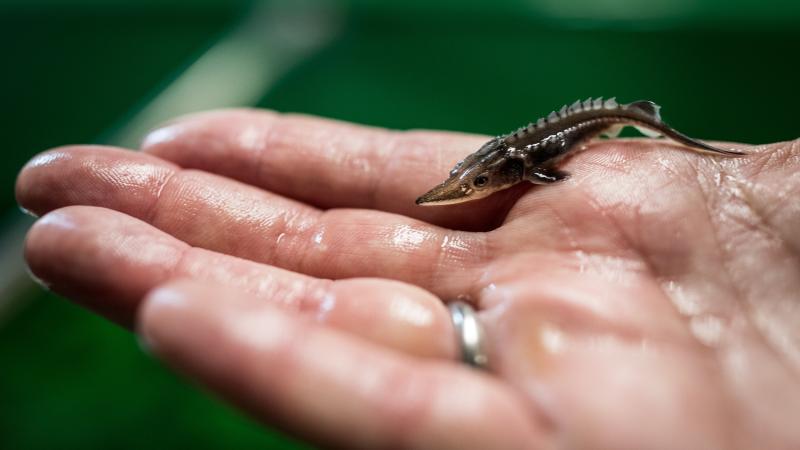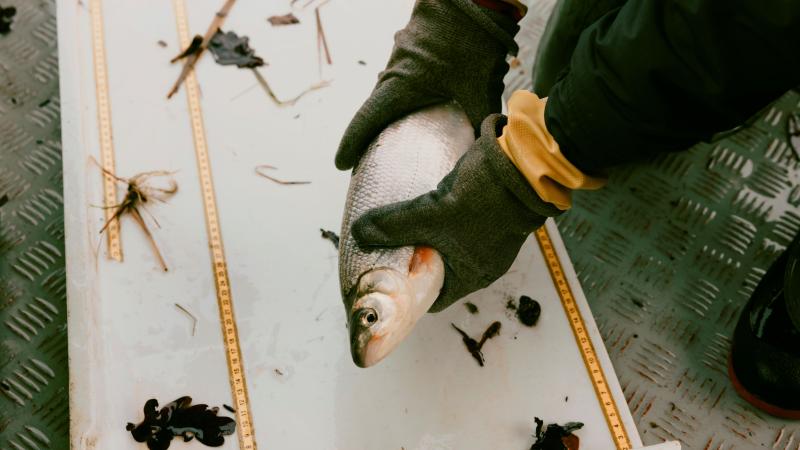
The environmental conditions under which Prymnesium parvum occurs in low concentrations and when it finds conditions where it has such a competitive advantage that it can develop en masse are the subject of current research at IGB. | Photo: Katrin Preuss/IGB
The River Oder disaster in August 2022 occurred because the brackish water algae Prymnesium parvum was able to develop massively in the highly salt-contaminated water in the Oder, to more than 100 million cells per litre of river water. Due to this high concentration of algae, the toxin prymnesin produced by the algae led to the death of around 1,000 tonnes of river fish as well as of snails and mussels.
Since then, the IGB has been continuing its research into the causes and consequences of the disaster. Among other things, the occurrence of the brackish water algae in the German stretch of the Oder has been analysed on a monthly basis since March 2023. Although Prymnesium parvum has recurred in low concentrations, it has not yet grown massively. The maximum density in summer 2023 was only about one hundredth (1 per cent) of the density in August 2022, so no fish have been poisoned in this stretch of the river so far.
Only minimal prymnesium densities in samples from other Brandenburg waters
Whether the toxin-producing brackish water alga Prymnesium parvum also occurs in other Brandenburg waters is a scientifically interesting question. For this purpose, the Landesfischereiverband Brandenburg/Berlin e. V. (Brandenburg/Berlin Fisheries Association) provided IGB with several samples from different Brandenburg waters. In these samples, the IGB researchers also found Prymnesium cells, but at low densities. They corresponded to only about one thousandth (0.1 per cent) of the algae density measured in the Oder in August 2022.
This first and preliminary observation is in line with the international state of research, according to which the brackish water algae can be found in low concentrations in many water bodies. At such low concentrations, however, there is no immediate danger. The only risk of fish kills is from mass blooms of Prymnesium parvum, which can only occur in salt-polluted inland waters or in brackish water.
Urgent need to reduce salt concentrations
An important question is the maximum amount of salt that can be discharged into a water body without creating a risk of mass development of this alga. There is still no scientifically based threshold value for this. Currently, IGB is conducting scientific studies as part of the ODER~SO project, which is funded by the German Federal Ministry for the Environment.
The IGB researchers emphasise that, according to the current state of research, reducing the salt load or concentration is the most important factor in preventing mass development of brackish water algae.



